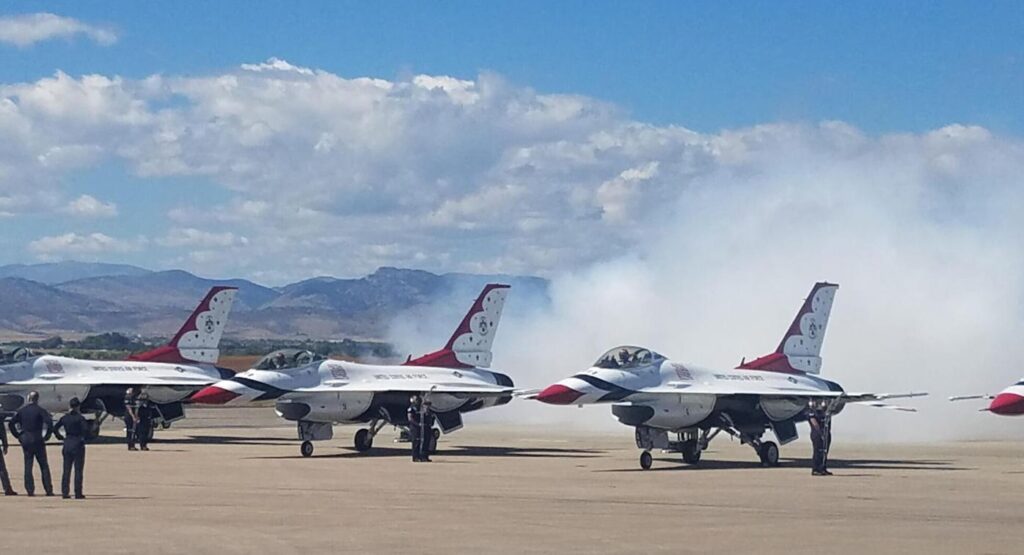‘Pictures’ documentary gives different look to postwar Hiroshima

Shizumi Manale was born in Hiroshima, three years after the bombings that brought about the end of World War II. The first of two atomic bombs dropped by the U.S. in August 1945 killed about a third of Hiroshima’s 255,000 residents.
Moved by news of the devastation, members of All Souls Church, a Unitarian church in Washington D.C., collected a goodwill shipment loaded with gifts and school supplies for children at the city’s Honkawa Elementary.
“Over 400 students were attending the school. If they had been at the school, they would have been killed, but these children were evacuated,” Manale said. “When they came back weeks later, many of the teachers, students, parents and grandparents are gone. Some are orphaned. It’s chaos.”
In 1948, the congregation received the children’s thank yous – 48 drawings rendered in crayon, colored pencils and paint depicting scenes that were anything but dismal. In the years after the war, the drawings were celebrated, then stored and ultimately forgotten. In 1995, they were rediscovered in the basement of a church member’s home and returned to the church, where they were brought out periodically for select audiences – until Manale was introduced to them about a decade ago.
“I thought they would be dark because of all the terrible things that happened. I was not expecting these beautiful drawings at all,” Manale said. “I wanted to know the whole story. What kind of education system and what kind of teachers did they have that they could draw drawings like this?”
An accomplished dancer and choreographer who has worked with tenor Placido Domingo and danced at the Smithsonian for President Obama’s inaugural celebration, Manale saw in the drawings a unique opportunity for a story about connections and hope that transcended culture and time. It could also fill in some lesser known aspects of American history.
“Growing up in America, every sixth- or seventh-grader studies the war, and in history books they talk about the Pacific Ocean war and Pearl Harbor, but the atomic bomb is very short. Even 70 years later it is a sensitive subject. I wanted American civilians and the young generation to understand what happened and how people focused on children and the future,” Manale said. “This is a story about our past, but it is a story about our future. To me, being Japanese and living in America, this message is very important.”
Given survivors’ advancing ages, Manale set off on her own dime, making regular trips to Japan to interview survivors. She connected with 22 of the 48 artists who sent their childhood drawings to the States. Their stories and interviews are part of the 82-minute documentary “Pictures from a Hiroshima Schoolyard.”
Colorado Springs resident Joan Grant saw an unfinished version of the film at a screening several years ago in Santa Barbara, Calif.
“The film was so moving and had a beautiful message of hope and healing. I thought it would be great to bring it to Colorado Springs,” said Grant, who posed the idea to a group of like-minded individuals when she returned home. “This team was moved by the film as well. It’s been about two years in the making. The stars had to align.”
Told through the eyes of art and children, the film is a moving and timely tribute to hope, said Nancy Bentley, a member of the planning committee that helped bring Manale and her film to town.
“What I especially love about the film is the interviews of those children who are now in their 70s and 80s looking back on their experiences right after the bombing and why they drew and painted what they did,” Bentley said.
Before she returns home to Washington D.C., Manale is scheduled to speak at Colorado College and High Plains Unitarian Universalist Church, where her project has inspired children in the congregation to create “comfort blankets” for needy children.
“Seventy years ago a small group of people reached out to this Japanese school and performed what Shizumi calls a simple act of kindness,” Bentley said. “The film just felt like a perfect way for us to remember what happened. This is our a follow-up to a very inspirational act.”
Drawing by Misako Simomura, age 10. “Pictures from a Hiroshima Schoolyard.”
Drawing by Sachie Fujii, age 10. “Pictures from a Hiroshima Schoolyard.”
American children receive drawings. “Pictures from a Hiroshima Schoolyard.”
Japanese children receive art supplies. “Pictures from a Hiroshima Schoolyard.”
Shizumi Manale. Courtesy photo.
Shizumi Manale. Courtesy photo.








